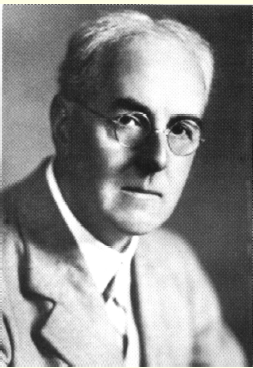Celebrating Lewis Fry Richardson and his legacy
The story of a Met Office mathematician and scientist's impact on early and modern weather forecasting in the United Kingdom
In 1913, mathematician and scientist Lewis Fry Richardson (pictured below) was in charge of the Met Office’s Eskdalemuir observatory in Scotland. While there, he started developing ideas on weather forecasting using mathematical methods.

From the Met Office to Friends' Ambulance Unit
Due to being a Quaker and pacifist, Richardson was a conscientious objector during World War I. So, in 1916, he left the Met Office to join the Friends' Ambulance Unit founded by the Religious Society of Friends (Quakers). His role was to drive ambulances in the Belgian city of Ypres. But outside work, he continued experimenting on the first-ever numerical forecast, based on scientific rules rather than past trends.
In 1917, instead of using mathematical models, weather forecasters matched current weather with patterns in past weather records. However, Richardson was later able to develop this more scientific and accurate method of forecasting.
Trial in the trenches
As war continued around him, Richardson began to experiment with creating a numerical weather forecast. For his first attempt, he recreated a past forecast for Central Europe, using published weather data, such as temperature, pressure and wind speed.
Modern forecasting uses complex algorithms run on powerful supercomputers, in which observations of current weather are processed through a mathematical model of the atmosphere to forecast its future state. Richardson devised a gridded map of the forecast area and generated, by hand, the first numerical weather prediction.
The calculations took Richardson more than six weeks to produce a six-hour forecast for just one location. While this forecast was inaccurate, due to limitations with the data, his pioneering method was eventually proved correct.

An early version of Lewis Fry Richardson's gridded map
Weather Prediction by Numerical Process
After the war ended, Richardson continued to develop his theories and rejoined the Met Office. In 1922, Richardson published his now famous book, Weather Prediction by Numerical Process. During the war, a draft of his book was apparently sent away from the frontline for safe keeping. However, it was lost and then allegedly rediscovered months later under a heap of coal.
As well as his methodology, Richardson described his ideas of what has since been called his ‘forecast factory’. Richardson imagined a large circular theatre-like hall, with a map of the world painted on its walls. He estimated that 64,000 mathematicians tasked with computing would be needed to calculate weather forecasts in real time, each responsible for one small part of the world.
The pioneer of modern forecasting
The mathematical methods, instigated by Richardson, started to become a practical reality after World War II with the help of electronic computers.
Although his vision of the forecast factory was never fully realised as he'd imagined, Richardson will be forever remembered as a pioneer of numerical weather prediction whose work paved the way for modern forecasting.
Today the Met Office provides weather and climate science and services in the UK and around the world. A supercomputing system uses parallel processors to undertake the huge numbers of calculations needed to run global forecast models. Our global Numerical Weather Prediction model, used for weather forecasting and climate projections, is a renowned national meteorological service model.





